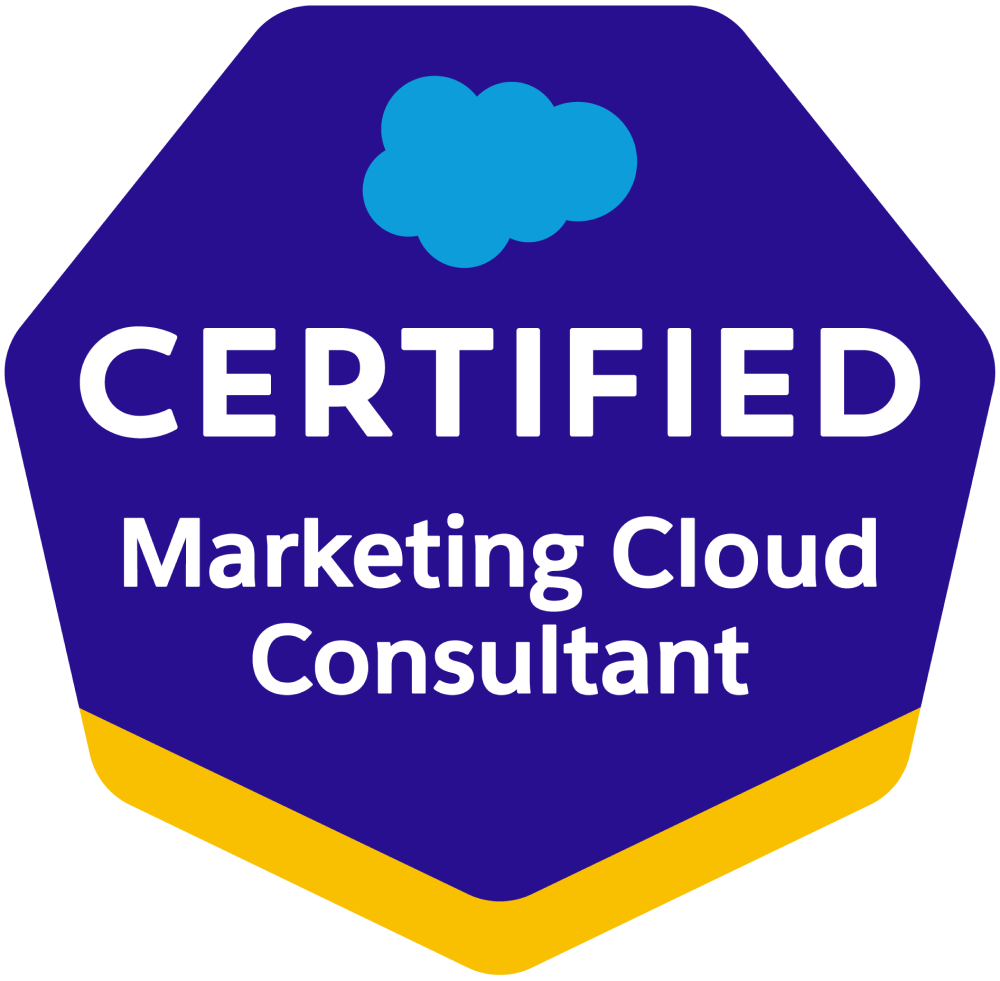
An education is a major investment for students and attracting and retaining students is as much a business challenge as it is a recruitment challenge. Fortunately Salesforce recruitment and student engagement solutions integrated with data analytics tools by your valued Salesforce partner can meet the challenge head on.
Universities and colleges need to analyze data to answer questions about what has happened, what might happen, and what they can do to nurture connections to help students take action (such as apply, graduate, or donate). With a tremendous mixture of student populations and schools, a university has data and tools available to improve student experiences but where do they start?
Can your institution identify which students need extra tutoring or assistance connecting with the campus community? Did increased social media ads lead to more applications for one or more departments? To learn more about data analytics for higher education, read on to see how these schools used analytics to improve student enrollment and health, to improve student support, and to meet challenges head on with Salesforce. Salesforce provides a crm for recruiting financial aid and student success.

The COVID-19 global pandemic disrupted life for everyone. While the University of Kentucky (UK) was no exception, their ability to quickly and seamlessly transition to remote learning mid-semester during the spring of 2020, still maintaining high levels of transparent communications with its community, was impressive. Planning for the upcoming fall semester, however, brought a broadened set of issues and challenges to be addressed.
As leaders assessed their options, they agreed it was paramount that they ensure the safety and health of their entire school community, while also continuing to deliver on the UK brand. Keeping the students they had worked so hard to recruit while delivering on their commitment to providing an exceptional campus experience for residential students was challenging.
To solve this challenge of balancing safety and delivering the expected, on-campus experience, UK’s leaders created a task force involving more than 500 people spanning 19 workstreams. Throughout, they maintained an intentional focus on outward communication more than ever before. UK’s faculty, parents, and students were sent targeted “Uplift and Update” emails bi-weekly through Salesforce Marketing Cloud intended to raise spirits, inform people of the latest developments, and to ensure a continued meaningful connection with their community. The entire extended UK family had to be reassured that health safety would be maintained while delivering on the university experience.
Three months of research and collaboration led to the playbook for the reinvention of operations at University of Kentucky. Salesforce was at the forefront of the game plan.
Salesforce’s Work.com for Education Cloud, a suite of apps, expertise and services packaged together to help institutions reopen safely and then monitor the health of the community post their return, was selected as the technology to support the tracking of daily symptom checks and assessments.
With Work.com, UK is quickly innovating to create:
- Testing and Reporting App so all students can document self-tests and are prompted to take action if experiencing any symptoms consistent with COVID-19
- Workplace Command Center to monitor return-to-campus readiness and assess people’s wellness.
- Emergency Response Management so everyone is prepared to respond effectively and quickly to all scenarios
- Contact Tracing for tracking health-related interactions to safely and securely minimize the spread of COVID-19
Through all of this, UK leadership continued to use Salesforce Marketing Cloud for communications to ensure each of the institution’s audiences—faculty, students, staff and parents—were kept appraised as the university community prepared to return for the fall of 2020.
Salesforce solved an unpredictable crisis brought on by COVID-19 and helped University of Kentucky ensure a safe return to campus.

Summit can help your school get more out of your Salesforce solutions, just like University of Kentucky.
Several years ago, Taylor University used Salesforce to completely revamp its recruiting model, switching from a geography focus that was based on where a student lived, to an academic focus based on what the prospective student was interested in studying.
Utilizing Salesforce Einstein Analytics Taylor University learned that individual counselors did statistically better recruiting prospective students who were interested in some majors than others. This enabled Taylor University to realign their model to have counselors devoted to specific academic areas.
The results of that shift were immediate: the Fall 2015 recruitment cycle produced what was then the largest ever incoming class for Taylor University. In the following years, the school decided to embrace analytics further to examine how financial aid could best be utilized during the recruiting and admissions process.
Taking this next analytical step required making better use of existing data. Taylor University used a third-party tool called PowerFAIDS for financial aid. The tool was mostly used in a functional manner to generate a financial aid package. The information wasn’t fed back to their admissions counselors, so that they could learn from it and make an informed decision about how to leverage the scholarships to impact an enrollment decision. And the information wasn’t connected to other data sets for thorough analysis.
Taylor University already had Salesforce Sales Cloud in place to manage its recruitment and admissions, Salesforce Community Cloud for its online application portal, and Salesforce Marketing Cloud for emails and digital communications. Additionally, Einstein Analytics was already being used for reporting and analysis.
Having worked hard to bring all student information into one system, it was important to do this for the financial aid data as well. With the Salesforce ecosystem, Taylor University had a solid foundation to create a 360 degree student view.

In 2016, the university integrated the PowerFAIDS data with its Salesforce implementation, enabling the school to start using Einstein Analytics to report on financial aid.
The reports and analysis that Salesforce generated gave admissions counselors predictive probability numbers allowing them to start thinking about financial aid strategically, rather than just a process to be completed. Einstein Analytics provided insights that made a big difference.
With stronger insights into how financial aid and scholarships impact recruiting and admissions – coupled with the other insights that Salesforce can harvest from the school’s data – Taylor University has seen its numbers trend upwards.
Taylor University has seen its student inquiry pool increase by 600%.
The school has extended the benefits of its Salesforce implementation from the admissions office to the academic enrichment center, which is in charge of student success at Taylor University.
Taylor University has realized a 90% retention rate. The data impacting this rate is captured within Salesforce for the academic enrichment center to make use of. They can spot patterns and potential flags that a student might be thinking of withdrawing. When seen, they can take proactive steps to reach out to the student with tutoring, guidance, or even just assistance on how to navigate a higher education institution. Salesforce helped Taylor University improve the overall student experience.
Taylor University exposed the students themselves to the power of Salesforce analytics through a popular course that gives them hands-on experience with Salesforce tools.
From admissions and financial aid, through various aspects of student life, Salesforce has helped Taylor University become more competitive in the higher education community.
Salesforce helped Taylor University become more sales-minded and competitive in the race to attract and retain students.
From K-12 schools to community colleges, universities, and graduate schools – Salesforce and Summit work with institutions of all sizes to deliver the education CRM your school needs to be future-ready. Summit is a full service implementation partner providing integration and managed services to clients.
Demand for connected student services is higher than ever before. Delivering complete student services by connecting every channel, personalizing every engagement, and scaling every process is one of areas Summit excels.
The Ohio State University College of Arts and Sciences (ASC) is one such success story.
The ASC Marketing Department provides creative solutions to help staff connect with their audience and successfully promote their department, center, initiative, program or event.
The ASC Marketing Department is tasked with marketing to prospective students with the goal of getting them to apply to OSU and major in one of the majors offered by ASC. After a student applies and has been admitted, ASC Marketing is also challenged with ensuring an admitted student stays connected and ultimately enrolls in classes. The reality is a certain percent of students that are admitted never enroll for classes, thus creating a problem referred to as “Summer Melt”.
ASC Marketing wished to have the ability to track their results within the prospecting and recruiting cycles as well as across multiple academic years. They wanted to be able to establish an analytics platform of reports and charts to visualize their prospecting and admit funnels and track the efficacy of their efforts.
ASC Marketing also wanted an enterprise-grade multi-channel marketing solution connected to a proven CRM like Salesforce to create marketing content and engage prospects and admits intelligently and dynamically through multiple channels including SMS and email using a journey builder.
Summit analyzed the data coming from internal systems and architected a data model in Salesforce Sales Cloud CRM to house prospects in the Lead object and Admits with their application information in Contacts and Opportunities. Hundreds of custom fields were created to house the data imported into the system. Custom stages were created to track prospect and admit progress through the recruiting and admit process.
As the data is coming from the OSU Admissions department on an as-requested basis in a flat file, and an ETL solution is not feasible at this time, Summit devised a solution to load the data into Salesforce quickly and easily. The solution consists of a MS Excel Power Query spreadsheet to automate the numerous data transformation steps required to re-format the data to one that would be accepted by Salesforce. The Apex Data Loader command line interface was leveraged to reduce the process of data loading to copying and pasting a couple commands to a command prompt.
Summit created 15 different reports and charts that allow ASC Marketing staff to visualize their funnels by data such as gender, in-state or out of state, regions of the world where applicants were located and other criteria.
Salesforce Marketing Cloud was connected to Sales Cloud using the connector and a custom domain hosted by OSU was provisioned to send email. Data extensions were created in Marketing Cloud to house prospect and admit data for the purposes of utilizing the Journey Builder to create comprehensive engagement plans.
Summit provided training to ASC Marketing staff for the CRM solution, the data loading process and introduced the team to Market Cloud Email Studio and Journey Builder.
Salesforce’s Education Cloud is the CRM foundation that strengthens student engagement with:
- Mobile Student Portal
- Appointment Scheduling Wizard
- Conversational Chatbots
- Sentiment Surveys
The Salesforce ecosystem has a wide variety of fully customizable solutions for Higher Education as well as K-12 education. Summit LLC can help you integrate Salesforce for better student experiences for the entire lifetime of their relationship with your school.


























